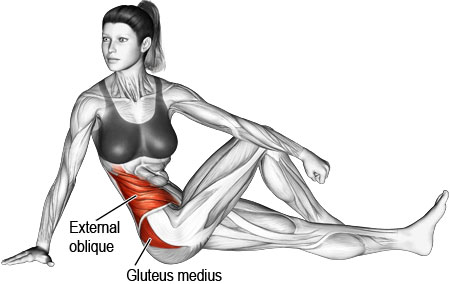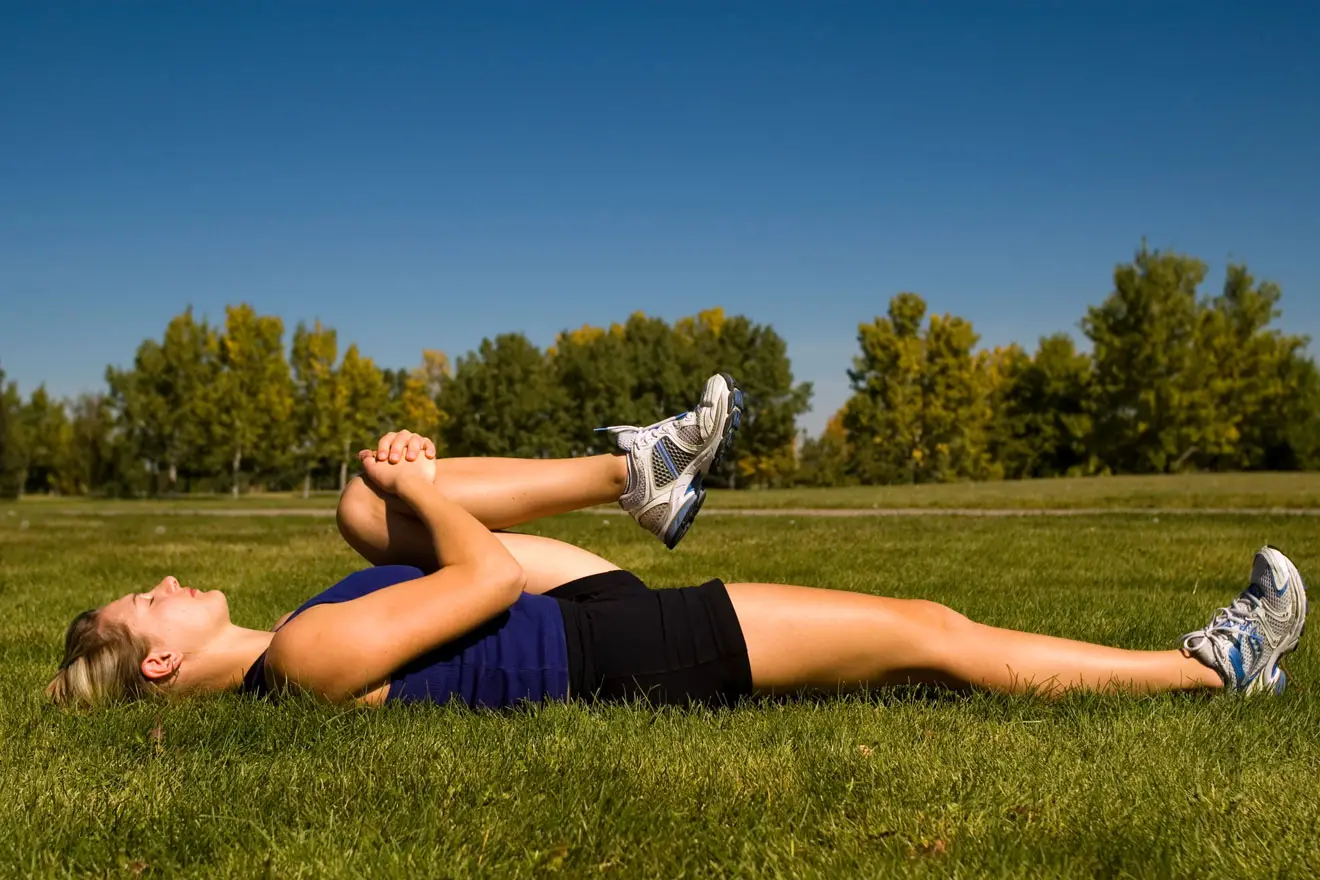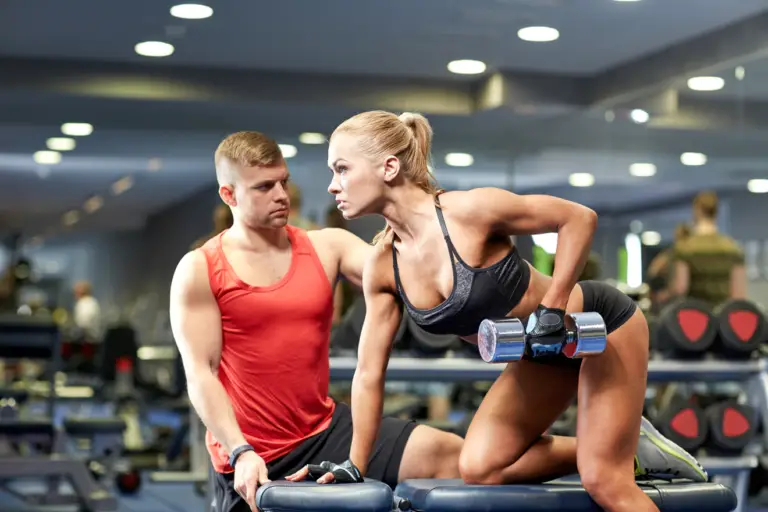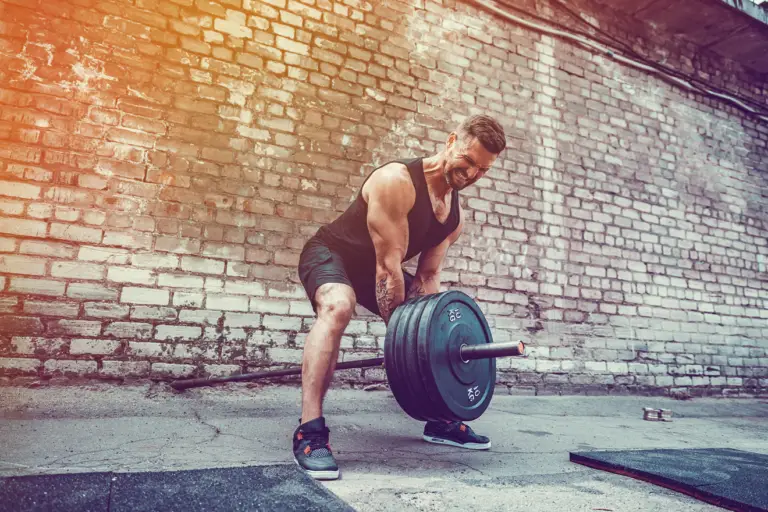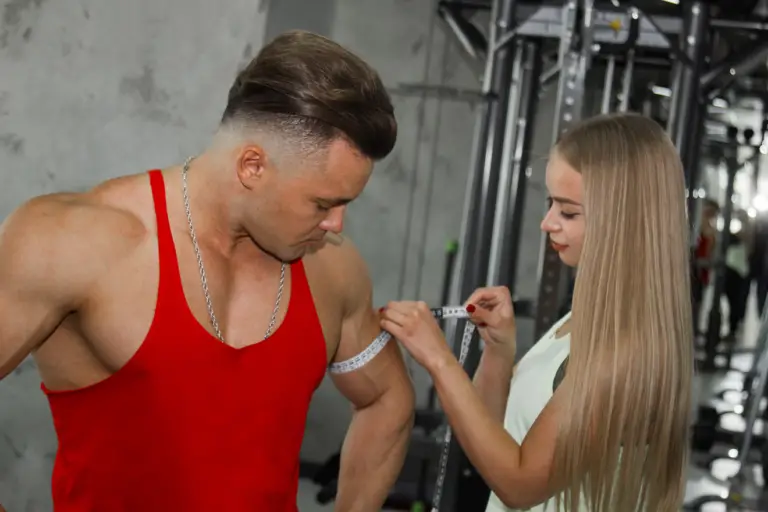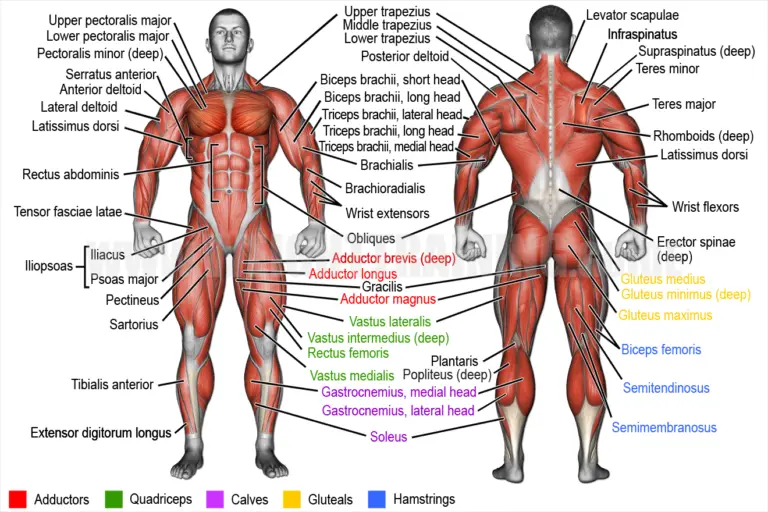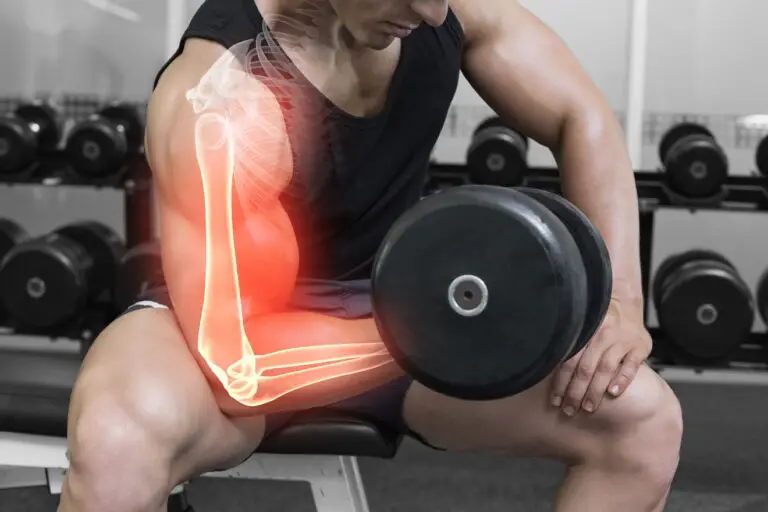How to stretch
The post-workout static stretch
Many individuals understand the importance of the warmup before the workout but fail to appreciate the importance of the post-workout stretch. The post-workout stretch is very straightforward. It basically involves gently stretching the muscles that you trained during your workout, and it only takes 5 to 10 minutes. The type of stretching that you do is static stretching as opposed to the dynamic stretching that you did as part of your warmup.
Benefits of static stretching
As explained in How to warm up, static stretching is the regular kind of stretching that involves holding a position for approximately 30 seconds in order to elongate the muscle. Although static stretching is not suitable as part of your warmup, it can be beneficial after your workout because it can help to prevent a reduction in the range of motion of your joints, which may occur if you consistently perform reps with a partial range of motion. But that’s not all. Static stretching, whether performed after a workout or by itself, can also help to:
- Improve your flexibility by increasing the range of motion of your joints and stretching your muscles, tendons, ligaments, and skin
- Keep your muscle tissues, tendons, and ligaments strong, which reduces your risk of sustaining injuries, such as straining a muscle or tearing a tendon
- Reduce your chances of developing problems associated with muscle tightness, such as joint instability
- Improve your posture, mobility, and gait
- Make room for muscle growth by elongating the connective tissue (fascia) that covers your muscles
- Relieve tension that has built up in your muscles, helping you to relax
- Improve your awareness of your body and its limitations regarding movement and flexibility
Note that static stretching has no significant effect on preventing or reducing muscle soreness, which is now considered to be a myth.
The science of static stretching
In order to stretch properly and effectively, a very basic understanding of the science of stretching is necessary. In particular, you need to be aware of the two protective muscle reflexes. The reason is that, in order to stretch properly, you will have to work around one of the reflexes and work with the other reflex. The two protective reflexes are:
- The stretch reflex
- Autogenic inhibition
What is the stretch reflex?
Each of your skeletal muscles contains receptors called muscle spindles, which monitor changes in the length of the muscle and the rate at which the change in length occurs. If the muscle is rapidly stretched, the muscle spindles initiate a reflex that makes the muscle contract. This is the stretch reflex, and its purpose is to stop the muscle from overstretching and getting damaged.
What is autogenic inhibition?
Unlike the stretch reflex, which forces your muscles to contract, autogenic inhibition forces your muscles to relax. This reflex is initiated by receptors called Golgi tendon organs (GTOs), which are located in your tendons (the connective tissues that attach your muscles to your bones). GTOs monitor the amount of tension that builds up in your tendons during muscle contractions. If the tension is excessive, GTOs cause the associated muscles to relax, thus reducing or eliminating the tension and preventing damage to muscles and tendons caused by excessive forces.
How to stretch properly
In order to effectively stretch a muscle, you have to avoid initiating the stretch reflex and instead initiate autogenic inhibition. You avoid the stretch reflex by easing into the stretch slowly, and you initiate autogenic inhibition by holding the stretch for longer than six seconds. This will cause the muscle to relax, lengthen, and remain in a stretched position, allowing you to stretch it a little further. If you were to stretch the muscle rapidly, the stretch reflex would be initiated, forcing the muscle to contract and preventing any significant stretch from occurring.
How stretching can help to increase your strength and power
This benefit of stretching was left out of the list of benefits above because it requires understanding of GTOs and autogenic inhibition. Put simply, stretching can help to improve your strength and power by increasing the threshold at which GTOs initiate autogenic inhibition. The higher the threshold, the more weight you will be able to lift and the more intensely you will be able to train without being inhibited by GTO activation. This, in turn, will lead to greater gains in muscular size, strength, and power. Your GTO threshold will increase as your tendons become stronger as a result of both stretching and weight training.
General stretching guidelines
- Ideally, you should stretch immediately after your workout, while your muscles and tendons are still warm. You can also stretch muscles between sets, but only if you have finished training the muscles and have moved on to training other muscles
- If you perform static stretching sessions by themselves, away from your workouts, make sure that you warm up first with 5 to 10 minutes of dynamic stretching and/or cardio
- Avoid bouncing during the stretch, which can cause injuries and initiate the stretch reflex
- Always ease into the stretch slowly, and keep your focus on relaxing the muscle as much as possible
- Stretch only as far as is comfortable, and hold the position for up to 30 seconds
- Breathe normally as you stretch
- Release the stretch slowly
The stretches
Kneeling hip flexor stretch
- Take a very large step forward and gently lower your back knee to the floor. You can also kneel and then take a large step forward
- Place your hands on your front knee
- Keeping your body upright and facing forward, press the hip of your back leg forward
- Hold the stretch
- Repeat with your opposite leg
Main muscles stretched: iliopsoas of back leg, and gluteus maximus and adductor magnus of front leg
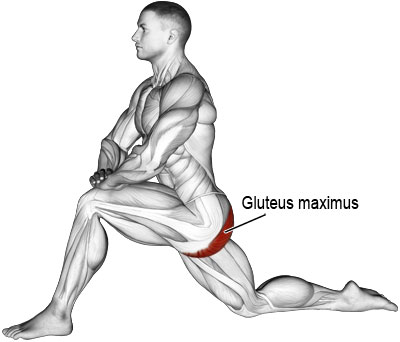
Lying glute stretch
- Lie on your back on the floor with your knees bent and your feet flat on the floor
- Cross the lower leg of one leg over the thigh of the other leg
- With both hands, grasp the back of the thigh upon which you rested the other leg and pull it toward your torso
- Hold the stretch
- Repeat with your opposite leg
Main muscles stretched: gluteus maximus
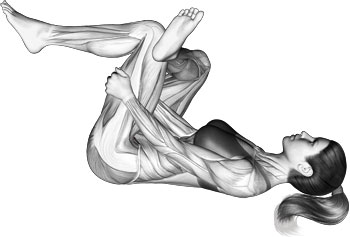
Standing quadriceps stretch
- Hold on to a sturdy object with one hand for balance
- Bend your opposite leg behind you and grasp the front of your ankle
- Keeping your knees close together, straighten your hip by moving your knee backward
- Hold the stretch
- Repeat with your opposite leg
Main muscles stretched: quadriceps
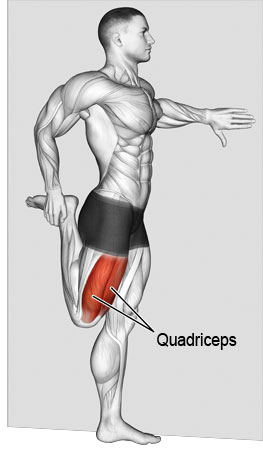
Seated hamstrings stretch
- Sit on the floor with your legs apart and knees straight
- Reach forward and grasp one foot
- Hold the stretch
- Repeat with your opposite leg
Alternatively, if it makes it easier for you, you can bend the leg that is not being stretched, as in the illustration.
Main muscles stretched: hamstrings and erector spinae
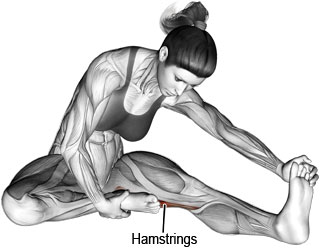
Seated adductor or groin stretch
- Sit on the floor and bring the soles of your feet together
- Grasp your feet and pull them close to your body
- Press your thighs or lower legs downward with your elbows
- Hold the stretch
Main muscles stretched: adductor brevis, adductor longus, and adductor magnus
You do not have to keep your back straight. In fact, you can use the opportunity to stretch your lower back (erector spinae) as well. If you lean forward, you can also stretch your gluteus maximus.
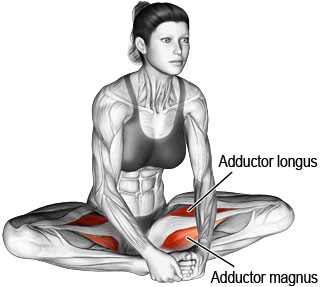
Calf stretch
- With your hands on your hips and both feet pointing forward, take a step backward with one leg and gently lower your heel to the floor
- Keeping both feet flat and your torso upright, straighten your back leg. Your front knee should be directly above your front foot
- Hold the stretch
- Repeat with your opposite leg
Main muscles stretched: gastrocnemius and iliopsoas
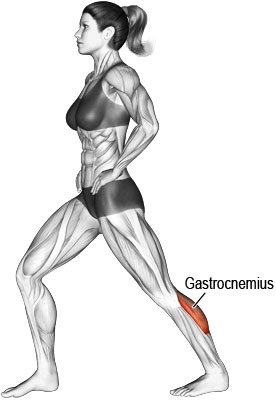
Chest and biceps stretch
- Stand perpendicular to a wall
- With your arm straight, place your palm against the wall at shoulder height
- Slowly turn your body away from your arm
- Hold the stretch
- Repeat with your opposite arm
Main muscles stretched: pectoralis major, pectoralis minor, anterior deltoid, biceps brachii, brachialis, and brachioradialis
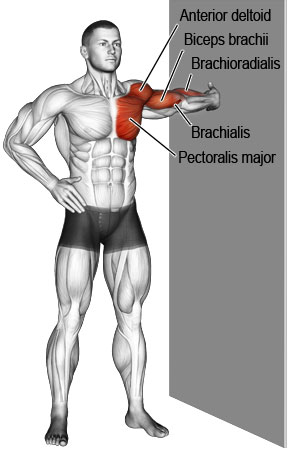
Upper back stretch
- Stand facing something sturdy that you can hold on to, such as a bar
- Grasp the bar with one hand at approximately waist height
- Bend over and allow your hips to fall backward and your arm to stretch forward
- Lean into the stretched arm
- Hold the stretch
- Repeat with your opposite arm
Main muscles stretched: latissimus dorsi, teres major, posterior deltoid, lower trapezius, rhomboids, infraspinatus, and teres minor
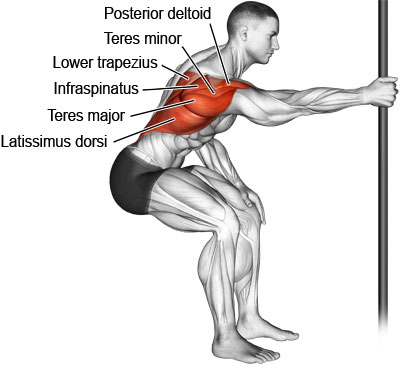
Side reach lat stretch
- Stand with your feet spaced wide apart
- Place one hand on the side of your thigh and raise the other hand overhead
- Lean to the opposite side of your raised arm and stretch your raised arm out
- Hold the stretch
- Repeat with your opposite arm
Main muscles stretched: latissimus dorsi and teres major
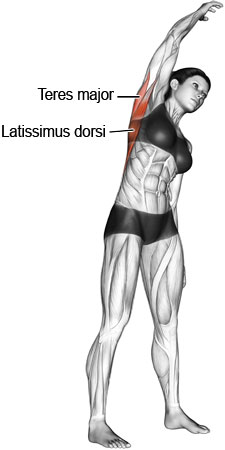
Posterior deltoid stretch
- Place one arm across your upper chest
- Grasp your elbow with your other hand
- Push your elbow toward your upper chest
- Hold the stretch
- Repeat with your opposite arm
Main muscles stretched: posterior deltoid, infraspinatus, teres minor, middle and lower trapezius, and rhomboids
To stretch your lateral deltoid, position your arm across your lower chest instead of across your upper chest.
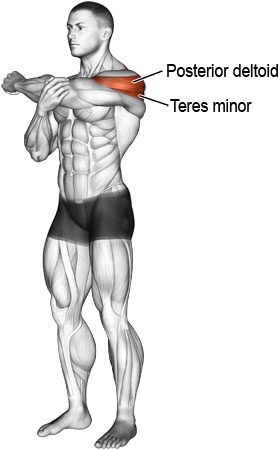
Overhead triceps stretch
- Raise one arm straight up into the air and flex your elbow as if reaching for your shoulder blades
- Grasp the elbow of your raised arm over your head with your other hand
- Pull your elbow backward
- Hold the stretch
- Repeat with your opposite arm
Main muscles stretched: triceps brachii, latissimus dorsi, and teres major
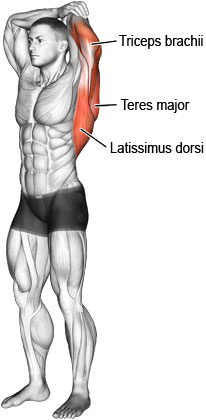
Cat stretch
- Get on your hands and knees, with your hands shoulder-width apart
- Flex your spine by hunching your back up
- Hold the stretch
Main muscles stretched: erector spinae
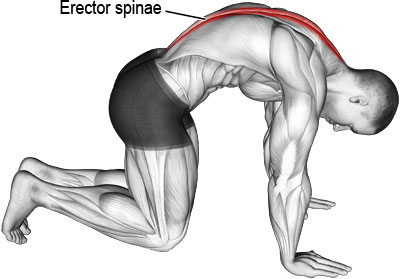
Prone abdominal stretch
- Lie prone (on your front) on the floor
- Place your hands on the floor to the sides of your shoulders
- Keeping your pelvis on the floor, push your torso up, off the floor
- Hold the stretch
Main muscles stretched: rectus abdominis and iliopsoas
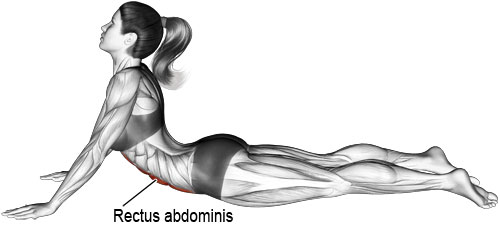
Pretzel stretch
- Sit on the floor with your knees straight
- Cross one leg over the other leg and place your foot on the floor next to your knee
- Twist your torso to the side of your bent leg. As you do so, you can support your body by placing your hand on the floor behind you
- Place the elbow of your opposite arm on the outside of your bent knee
- Twist your torso further by pressing your elbow against the outside of your knee
- Hold the stretch
- Repeat with your opposite side
Main muscles stretched: internal and external obliques, gluteus medius, gluteus minimus, and erector spinae
